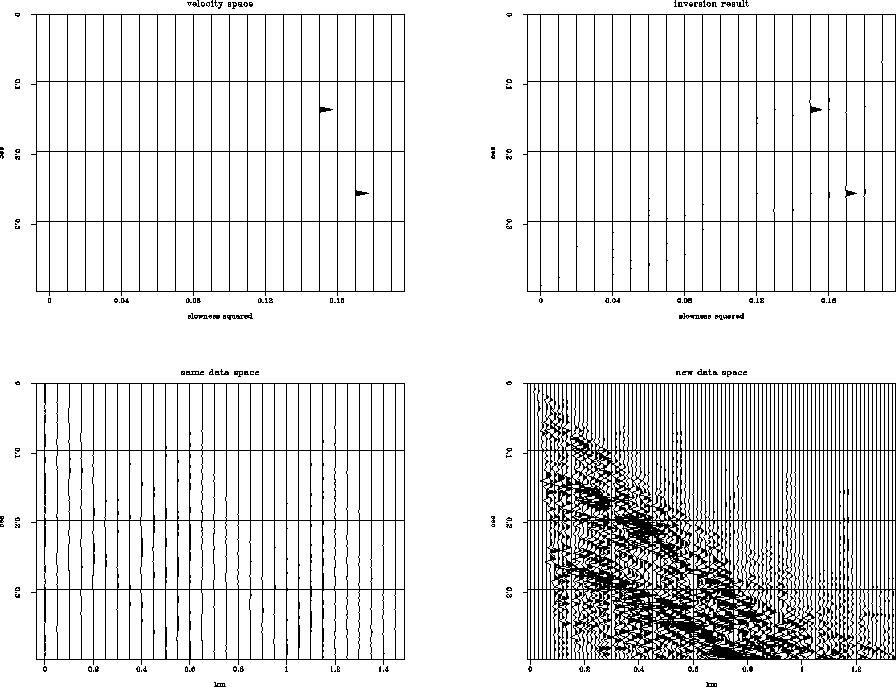




Next: PRECONDITIONING
Up: Crawley: Interpolation
Previous: INTRODUCTION
The basis of the interpolation scheme is very simple. Data, which may
be irregular, poorly sampled, have missing offsets, etc. are
transformed to coordinates of zero-offset time and velocity.
This velocity spectrum is then used to model data at the desired
offsets.
This may be formulated simply, but not effectively, as follows
Ji (1994).
Estimation of the velocity spectrum for a given CMP gather is
done by solving the equation
where d is the recorded data, m the model in velocity space, and
H the forward operator which creates a hyperbola in the
data space from a spike in the model space.
Interpolating in this manner does not yield satisfying results.
The reason is in the null space of the operator H.
Solving this problem by conjugate gradients yields a model
which predicts the recorded data very well.
However, even
for perfect hyperbolas, the final model will not be exact.
Spikes will tend to be smoothed, and some noise is inevitable.
This difference does
not impact the model's ability to predict
the data because, as Nichols 1994
points out, the difference between the exact model and
the inversion result is in the null
space of the operator.
However, changing the data space, which me must do in order to
interpolate or regularize, changes the null space.
Thus, the slight artifacts in the velocity space, which model
nothing in the original data space and thus do not contribute
to the residual (which resides in the original data space),
will model nonzero energy into a different data space, creating
artifacts.
Figure 1 shows a simple example of
a null space changing as data space changes.
On the top left of Figure 1 is a velocity space
with two spikes in it.
The top right is the velocity space estimated by inversion.
The bottom left is the difference between the two top panels
used to model into the same data space as was used in the inversion.
The bottom right is again modeling using the difference between the
top two panels, but this time into a new, finely-sampled data space.
Note that much more energy has appeared in the new data space. The
max values in the bottom right panel are 100 times those in the
bottom left panel.
The null space of the operator has changed.
The large amplitudes in the bottom right
are about one third the amplitude of the spikes in the
model space (top left of the figure), and of the hyperbola
amplitudes in data space.
This should represent an unacceptable interpolation artifact.
null-space
Figure 1 Null space effects:
Top left and right are original and estimated velocity spaces.
Bottom left is difference between top figures modeled into
original data space.
Bottom right is difference between top figures modeled into
different data space.










Next: PRECONDITIONING
Up: Crawley: Interpolation
Previous: INTRODUCTION
Stanford Exploration Project
11/12/1997
